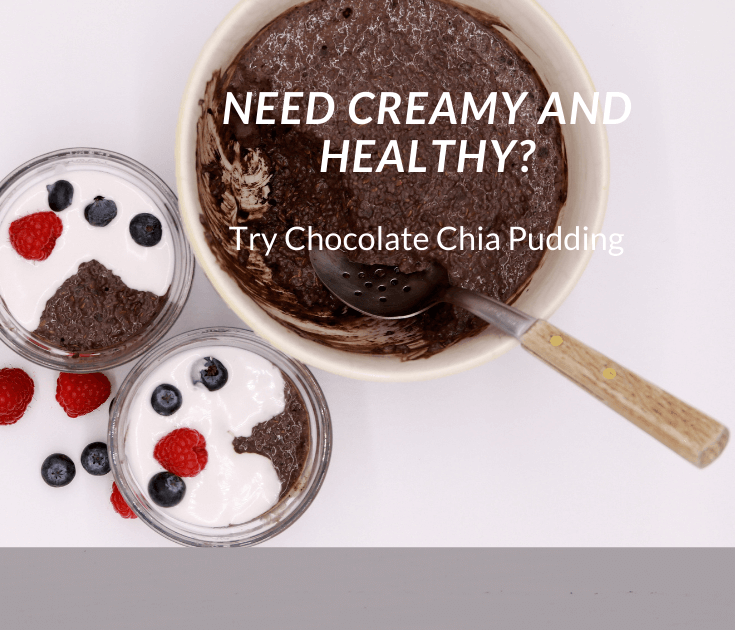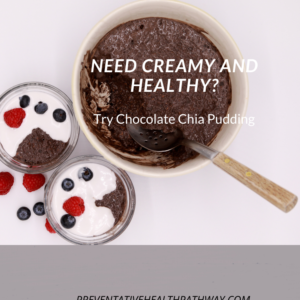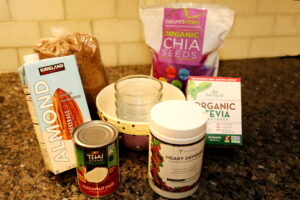Chia/Flax Seed Chocolate Pudding

Missing a Sweet Creamy Treat? Try Chia/Flax Seed Pudding.
When trying to get healthy, it seems like there are no satisfying desserts or breakfast cereals. If you are on Keto, many of them take you out of Ketosis. Getting enough fiber is also an issue. We all want to enjoy something yummy without thinking about is this good for me or not. I, for one, eat nothing healthy or otherwise if I don’t enjoy every bite. I also ask myself if something is good for my brain or bad for my brain. Chia/Flax Chocolate Pudding answers all four in a big way.
Does Chia/Flax Pudding take you out of Ketosis?
You only need 2 tablespoons of both types of seeds with each bringing 2-4 grams of net carbs. These little seeds carry a big punch. They are full of fiber, protein, omega-3 fatty acids, antioxidants, and minerals. Plus, they will not risk ketosis.
How much fiber does one serving of Chia/Flax Pudding have in it?
A serving this size carries a whopping 10. 6 grams of fiber for the chia seeds and 6.0 grams of fiber for the flaxseeds. Bringing 16.6 grams of fiber. This is more than half of your fiber needs for the day.
Does Chia/Flax Pudding satisfy the craving for sweet creamy desserts or cereals?
When I used only Coconut cream, the mixture became too thick and pasty. When I mixed Almond milk and Coconut cream, the pudding became a perfectly creamy consistency. Using Cacao powder and Stevia would work, but I have not tried that yet because using the Heart Defense from Dr. Gundry is so good and I don’t need to add sweetener. I have also used Vital Blues, which gives it a nice berry flavor and added benefits like probiotics and phytonutrients. If you are a coffee lover, you could add freshly brewed organic coffee to the pudding. Experiment with different flavors to suit your personal palette.
Is Chia/Flax Pudding good for my brain?
Omega-3 fatty acids and neuroprotective antioxidants are in abundance in chia seeds. These essential fats and antioxidants give cells the fuel they need to run like a well-oiled machine. Healthy cell membranes create quick and efficient messaging between cells and the delivery of nutrients, enhancing brain health in all areas of the brain.

Chia/Flax Seed Chocolate Pudding
Ingredients
- 2 Tbsp Chia Seeds
- 2 Tbsp Flax Seeds
- 1/4 Cup Unsweetended Almond Milk
- 1/4 Cup Canned Coconut Cream
- 1 Scoop Heart Defense Chocolate I get this from Dr. Gundry
- 1 Packet Sweet Leaf Stevia Optional
- 3 Tbsp Canned Coconut Cream According to taste add to the top of pudding when serving
- 1 Handful Fresh/Frozen Berries Optional
Instructions
- In an 8 oz glass container or mug add Chia and Flax seeds and chocolate powder.
- Take a fork to get any lumps out of powder and mix well.
- Add Almond Milk and Coconut Cream and mix well.
- Put in refrigerator for 30 minutes to overnight (this is the creamiest way)
- Remove from refrigerator and add layer or coconut cream to the top and berries if you desire. Enjoy!
Notes

